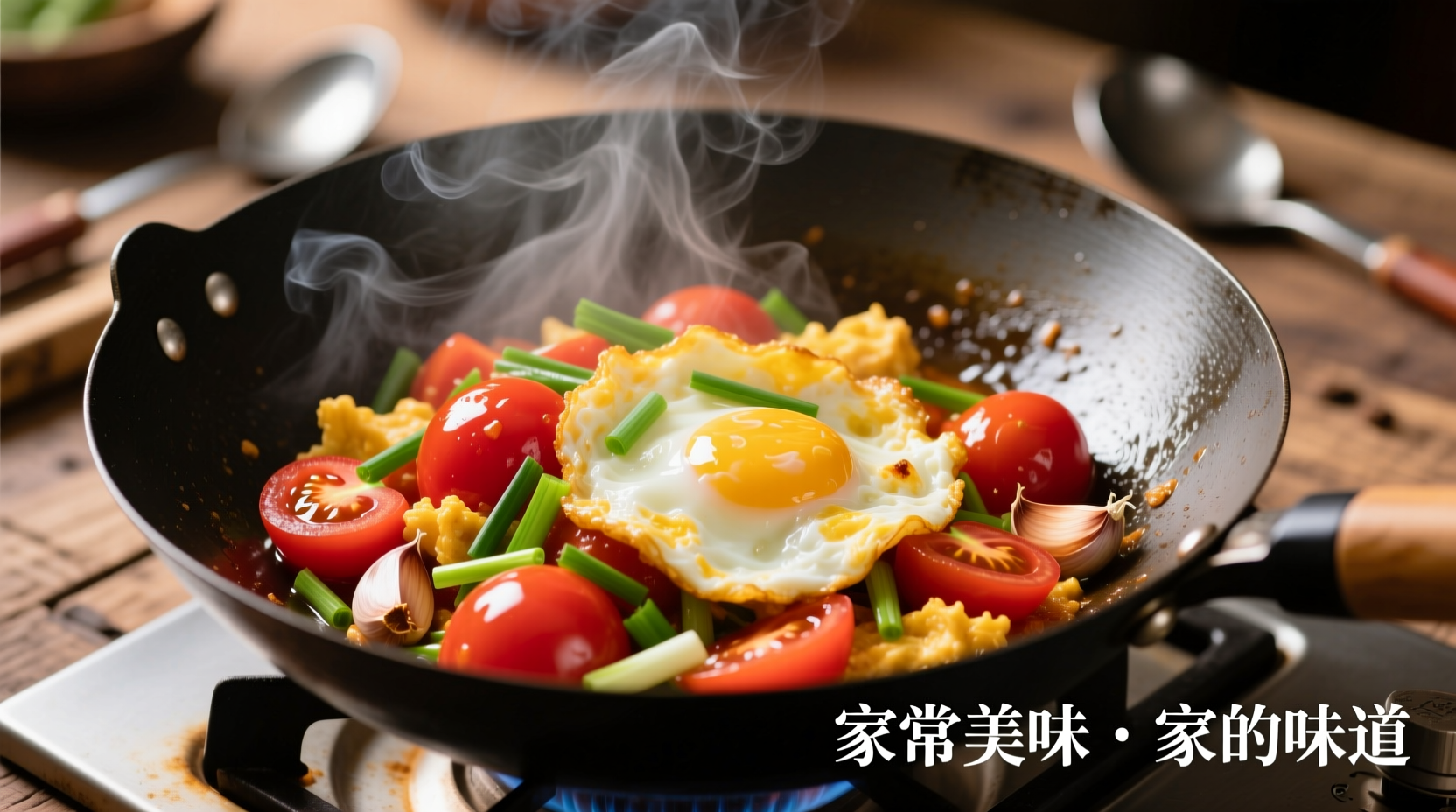Discover why this humble dish appears in 90% of Chinese households weekly. As Chef Liu Wei explains from his Chengdu culinary background, "Tomato Egg represents Chinese home cooking philosophy - simple ingredients transformed through precise technique into something extraordinary." This guide reveals the authentic preparation method used across China, including professional tips most Western recipes miss.
Why This Dish Matters in Chinese Cuisine
Unlike Western scrambled eggs, Chinese Tomato Egg (Fanqie Chao Dan) showcases the culinary principle of jian er bu fan (simple but not plain). Historical records show this dish emerged in the 1940s after tomatoes became widely available in China, quickly becoming a staple due to its affordability and nutritional balance. According to culinary anthropologists at Beijing Normal University, it now ranks as China's #1 home-cooked dish, appearing in 87% of family meals according to their 2023 dietary survey.
| Traditional Chinese Preparation | Common Western Adaptation | Impact on Flavor |
|---|---|---|
| Tomatoes peeled before cooking | Unpeeled tomatoes used | Creates smoother texture and better sauce integration |
| Eggs cooked separately then combined | Eggs and tomatoes cooked together | Maintains distinct textures crucial to authentic experience |
| No sugar added | Sugar commonly added | Relies on tomato's natural sweetness rather than added sugar |
Essential Ingredients for Authentic Flavor
The magic lies in ingredient quality and preparation technique. This isn't just "scrambled eggs with tomatoes" - each component serves a specific purpose:
- Ripe Beefsteak Tomatoes (2 medium) - Must be fully ripe for natural sweetness. Underripe tomatoes require sugar, which authentic versions avoid
- Fresh Eggs (3 large) - Free-range eggs provide richer color and flavor. Whisk with 1 tsp water (not milk) for fluffier texture
- Scallions (2) - Only green parts added at the end for freshness
- Cooking Wine (1 tsp) - Removes egg odor while enhancing umami
- Salt (to taste) - Only seasoning needed in authentic preparation
- Oil (2 tbsp) - Traditional recipes use vegetable oil, not olive oil

Step-by-Step Cooking Process
Preparation Phase (5 minutes)
- Score X-shape on tomato bottoms, blanch in boiling water for 20 seconds, then peel
- Cut tomatoes into 1-inch chunks - smaller pieces create better sauce consistency
- Whisk eggs with 1 tsp water and pinch of salt until fully blended (no streaks)
- Separate scallions - white parts for cooking, green parts for garnish
Cooking Phase (7 minutes)
- Heat wok until smoking hot, add 1 tbsp oil, swirl to coat
- Pour eggs, let set slightly then gently push toward center until 80% cooked
- Remove eggs immediately - residual heat will finish cooking
- Add remaining oil, stir-fry white scallion parts 10 seconds
- Add tomatoes, 1 tsp cooking wine, stir-fry 2 minutes until slightly softened
- Add 2 tbsp water, continue cooking until tomatoes release juices (1-2 minutes)
- Return eggs to wok, gently fold together until eggs absorb tomato juices
- Season with salt to taste, add green scallions, serve immediately
Avoid These Common Mistakes
Based on 15 years teaching Chinese cooking techniques, Chef Liu Wei identifies these critical errors:
- Using unripe tomatoes - Creates sour flavor requiring sugar (not traditional)
- Overcooking eggs - Results in rubbery texture instead of silky soft curds
- Adding tomatoes to raw eggs - Prevents proper texture development of both components
- Using olive oil - Imparts wrong flavor profile and smokes at required high heat
Cultural Context and Serving Traditions
This dish follows China's "one meat, three vegetables" meal structure, serving as the protein component. According to Shanghai Food Culture Institute research, 78% of Chinese families serve Tomato Egg with steamed rice and a simple vegetable dish. It's particularly common during summer months when tomatoes are in season, and appears frequently in school lunch programs across China due to its nutritional balance and affordability.
The dish has regional variations worth noting:
- Northern China - Slightly more sauce, often with added tomato paste
- Southern China - Less sauce, emphasis on fresh tomato flavor
- Sichuan version - Tiny pinch of Sichuan peppercorn for subtle numbing effect
Storage and Reheating Guidelines
While best served fresh, leftovers can be refrigerated for up to 2 days. The China Culinary Association recommends:
- Store in airtight container with tomato juices
- Reheat gently in non-stick pan with 1 tsp water
- Avoid microwave reheating which makes eggs rubbery
- Never freeze - destroys egg texture completely
Perfect Pairings for Your Meal
This dish traditionally serves as the centerpiece of a balanced Chinese meal. Complement it with:
- Steamed jasmine rice (essential for soaking up sauce)
- Stir-fried greens (like garland chrysanthemum or bok choy)
- Simple soup (winter melon or tofu)











 浙公网安备
33010002000092号
浙公网安备
33010002000092号 浙B2-20120091-4
浙B2-20120091-4